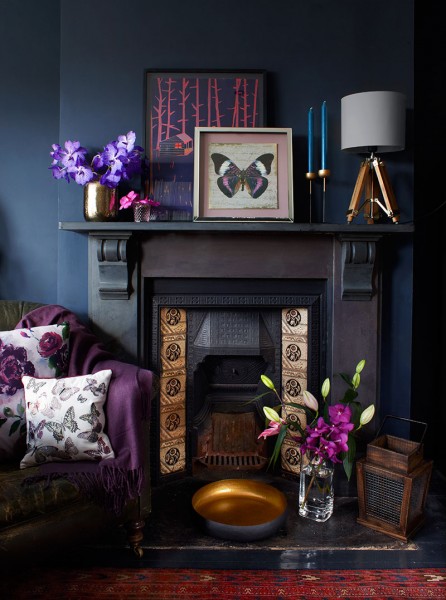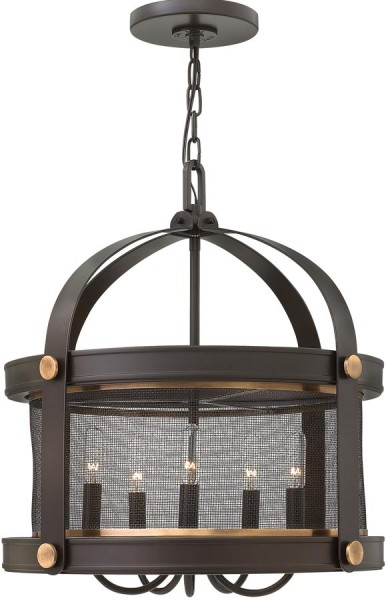If you’re bored of wanting more from minimalist interiors, or if Scandi-style leaves you cold, it might be time to embrace your dark side and go Gothic with your home.
Gothic design first appeared in the Middle Ages, in the imposing designs of European cathedrals, castles and prestigious universities. These dramatic structures would have distinctive features like pointed arches (particularly in doors and windows), clustered columns and flying buttresses, using innovative engineering to support huge frames of stained glass.
When the movement had a revival during the 18th and 19th century, the focus was turned towards domestic design. Made popular by ambitious renovations like Strawberry Hill, Twickenham, the old-world charm of Gothic architecture continued to be prevalent during the reign of Queen Victoria, when machine manufacturing allowed carvings to become more intricate than ever before.
Many people associate Modern Gothic with vampires and a fixation with death, which doesn’t have to be the case at all. Whether you have a passion for the original medieval style or love the Victoriana twist, Modern Gothic is simply about creating romance, mystery and drama. Here are the essential rules to follow if you want to pull off a tasteful, convincing Gothic interior. There are many interior design styles that effectively combine the modern and gothic look to great effect,” comments Ruban Selvanayagam of Property Solvers, a London-based sell house fast company.
1. It doesn’t have to be black…
The number one misconception about Gothic style is that it’s about black, black and more black. In actual fact, authentic Gothic design embraces all kinds of colour, with rich, jewel tones creating warmth and luxury in any space. Don’t be afraid to pick up paints in navy or plum, and look for sumptuous claret or emerald in your upholstery choices. You’re not even restricted to the darker end of the spectrum – ivory, lilac and soft greys provide an excellent backdrop for moodier tones.
2. But it can be.
That said, if you do feel drawn to the dark side there’s no harm in using a lot of black in your decor. Use different materials to provide variation and depth to your room, like glossy wooden furniture covered with silk and velvet drapes. Just be aware that you will need to keep other design elements pared back and grown-up so that you don’t end up living in a ‘haunted mansion’ stereotype.
This black on black interior uses complementary textures in the rug, sofa and coffee table to keep things chic.
3. Embrace the light.
Gothic architecture was originally about celebrating light, with vaulted ceilings designed to bounce it around the room to chase out the gloom. This is why Modern Gothic style works best in rooms with large windows that let in a lot of natural sunlight. Windows should always be well-dressed, but use curtain hooks or ties to keep heavy fabrics (velvet, damask and brocades are great for Gothic curtains) out of the way.
4. Remember that romance isn’t dead.
Even though it seems sombre, Gothic design is really all about the romance. Sumptuous flowing fabrics, opulent colours and delicate lace embellishments are just the beginning – you should also adorn your room with pillar candles, soft rugs and vases overflowing with blooms.

It’s easy to bring a moody interior to life with the help of some well-chosen flowers.
5. The devil is in the detail.
Part of the joy in a Gothic interior is the meticulous detail with which every feature is chosen. Even in the most understated Gothic home (if you can find one), you’ll notice that everything from the decorative skirting board mouldings curtain rail to the light fittings adds to the theme.
For this reason, it’s really unlikely that you’ll be able to spot any technology in a medieval or Victorian styled room. Shiny plastics and flat-screen TVs don’t exactly scream ‘romantic and mysterious’! If you’re planning a room and can’t bear to let go of your games console or gadgets, you’ll have to sneak them in with some clever integration or concealment.

Maximise your medieval feel with a rugged metal chandelier on an adjustable chain.
6. Introduce some heavy (or not so heavy) metal
Lots of gothic interiors embrace the beauty of wrought iron, using it in bed frames, dining chairs and tables, light fittings and other decorative features around the home. Don’t feel tied to black metal though, particularly if you already have a lot of very dark colours in your room. Moody pewter, polished silver or glimmering copper or brass can emphasise key pieces of decor (like mirrors, tableware or light fittings), lifting them out of the gloom.
7. Bring the drama.
A Gothic interior is not for the faint of heart – be bold or else stick to the magnolia! Choose furniture and accessories with decadent personalities, like wingback chesterfield armchairs, four-poster beds, flocked wallpapers, statement chandeliers and mirrors with ornately carved frames.
8. Show off your collection of curios.
Part of the joy of furnishing a Gothic abode is being able to search out unusual works of art and proudly displaying your collection of weird and wonderful trinkets. Taxidermy, macabre prints and even ancestral portraits are excellent for the decadent yet slightly unsettling vibe of a gothic interior.
Avoid shops selling mass-produced artwork and head to flea markets, antique shops and dedicated oddity dealers to find these pieces. If you can’t find exactly what you’re looking for, stock up on candles and vintage hardback books until you do.
Remember, the key to executing an enviable Gothic interior is to choose each element carefully. Figure out the specific type of Gothic design you’re trying to recreate and take your time to find coherent pieces that work together. Follow the rules we’ve set out and you’ll be feeling like dark royalty in no time.




